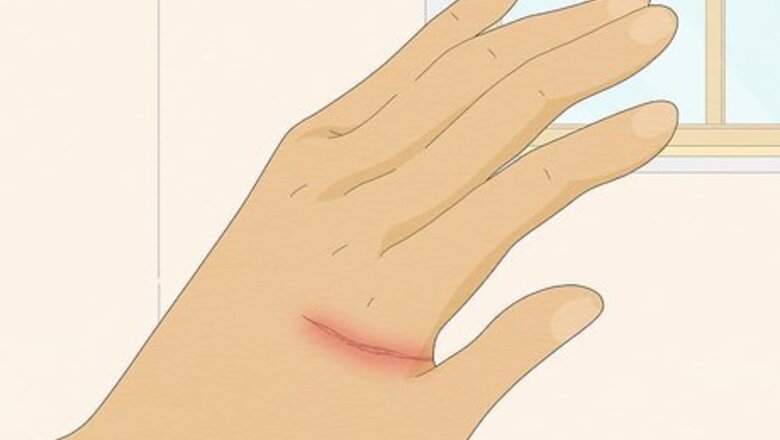
views
Fresh Cuts
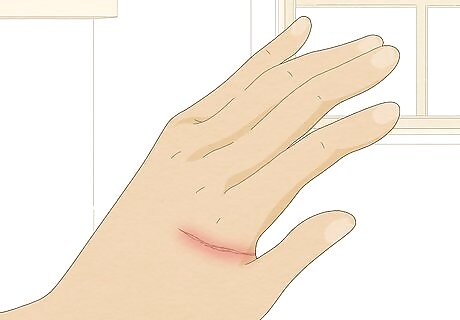
Assess how bad the cut is. Inspect your cut to see if it is deep enough to require stitches, or if you can treat it at home. If the wound is gaping, jagged, or exposing muscle or fat, see a doctor as soon as possible. The cut should be stitched within a few hours to reduce the risk of infection or scarring.
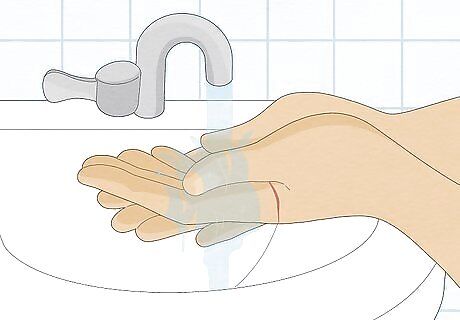
Wash your hands with soap and water. It is important to remember to wash your hands before touching your cut or scrape to avoid infection. Wet and lather your hands with an antibacterial soap, then scrub for 20 seconds and rinse. If soap and water are not available, use an alcohol-based hand sanitizer. To help you wash for a full 20 seconds, hum the “Happy Birthday” song twice from start to finish as you scrub your hands.
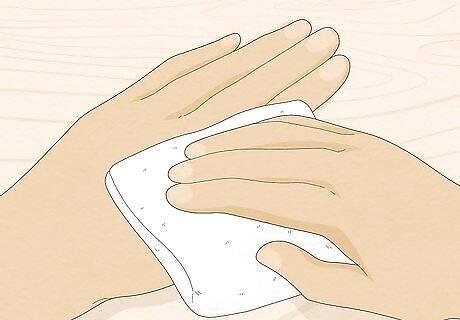
Apply pressure to stop the bleeding. A minor cut will probably stop bleeding on its own. If your cut does keep bleeding, apply pressure to the wound with a clean cloth. If possible, elevate the wound for a few minutes to help blood flow away from the area. If the wound is bleeding a lot, keep the cloth in place for at least 5 minutes. Don’t lift it to check on the cut, or you could disturb the clot and start the bleeding up again. Put a new cloth or gauze on top of the first one if it bleeds through. If you still see signs of bleeding after 5 minutes, call your doctor or go to the emergency room right away.

Rinse the cut with clean, cool water. If possible, use drinking-quality tap water or bottled water. Wash the surrounding area with a gentle soap and water, avoiding the actual open wound, and pat it dry with a clean cloth or piece of gauze. Sterilize a pair of tweezers by cleaning them with alcohol, then use them to remove any dirt or debris that might be stuck to your cut. If dirt or debris remain in the cut, contact your doctor as soon as possible. Avoid using hydrogen peroxide or iodine to clean the wound, as they can further damage the tissue around your wound and make it harder to heal.
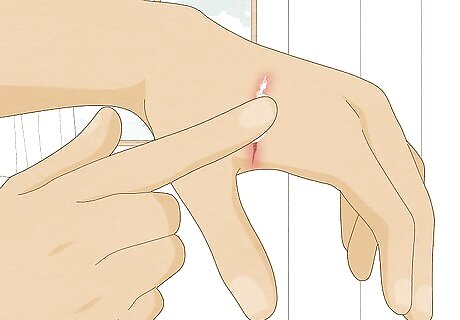
Put on antibiotic ointment. Shallow cuts or scrapes can heal on their own, but adding an antibiotic ointment can speed up the process. Purchase an ointment, such as Bacitracin, at your local pharmacy. Apply a thin layer to your cut after cleaning and drying it thoroughly. A petroleum jelly ointment, such as Vaseline, will also help protect the wound and keep it moist.
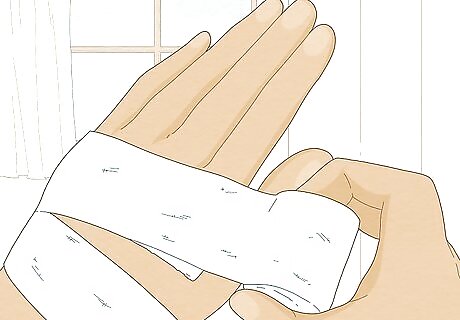
Cover the wound with a clean bandage. Once the wound is dry, cover it with a bandage or band-aid. Alternatively, cover the area with a small piece of gauze and attach the gauze to your skin with medical tape. Change the bandage whenever it gets wet or dirty, or if blood soaks through. You can remove the dressing after a few days, once the cut has closed itself.
Healed Wounds
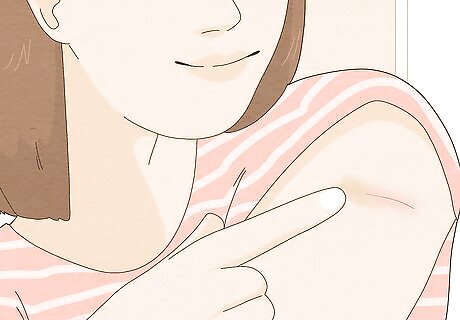
Tap concealer onto scars with a makeup sponge. To hide cuts, scrapes, or scratches, purchase concealer makeup and an applicator sponge or brush (available at pharmacies or beauty supply stores). Gently tap the concealer onto the cut in layers until you get the coverage you want. Apply a light dusting of translucent powder over the area to set the makeup and prevent it from rubbing off. For scars that are sunken in, fill the depression with a little primer before tapping on the concealer. If the scar is still red or pink, neutralize it with a thin layer of green concealer before putting on the skin-toned concealer. Always use a clean brush and only apply makeup to a closed wound.

Wear camouflaging clothing. Clothing is one of the simplest and most effective ways to cover up cuts on your body. Long sleeves and pants (or long skirts) will hide cuts or scrapes while they heal. It will also protect them from the sun, which can worsen scarring. In warm weather, balance your outfit by wearing less-covering items of clothing on areas of your body that do not have blemishes. For instance, if you wear longs sleeves to hide cuts or scrapes on your arms, wear shorts to balance out your look. Be sure that your clothing is loose enough to give your cuts space to heal.

Apply a temporary tattoo. Temporary tattoos can be a fun way to cover your cuts once they have closed over. Purchase temporary tattoos at a beauty supply store or make your own temporary tattoos using eyeliner. After a few days, be sure to remove your temporary tattoos as gently as possible with a gentle soap and water.
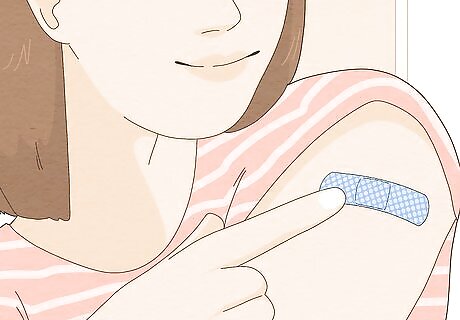
Wear decorative bandages. To hide your cuts in plain sight, make your own colorful bandages with decorative tape (available at craft stores or online). Attach a strip of colorful tape to the non-adhesive side of the bandage and trim away the excess tape around the edges. Apply it to your cut as you would a regular band-aid. Take care not to get the tape directly on your skin, since tape that’s not made for use on skin can cause irritation. You can also buy pre-made decorative bandages at a pharmacy or grocery store.
Self-Harm Cuts
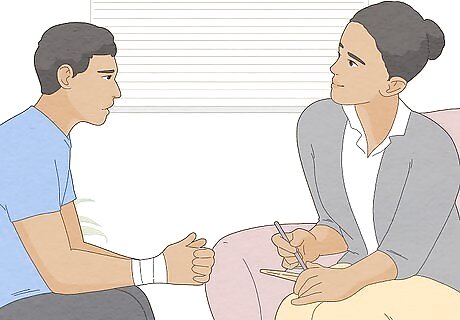
Seek help to deal with your self-harming issue. Even if your period of self-harming is behind you, seeking help can make the recovery and coping process much easier. Speak to your doctor about your options (which may include counselling or cognitive behavioral therapy). Talk to your therapist about any contributing factors that may have caused your self-harming behavior in the first place, like an eating disorder or sexual abuse. Coming to terms with the behavior and understanding it may change the way you view your scars, and how you wish to cover them.
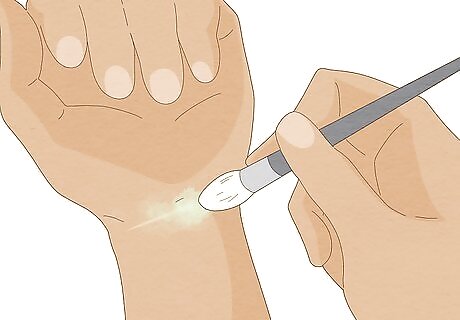
Use camouflage makeup. As part of your recovery process, you may wish to hide your self-harm scars with thick, camouflaging makeup. Look for makeup specially designed to cover scars. Choose a green-based concealer, which will cover the red undertones of your scars effectively. Dab the makeup over the scar until you are happy with the coverage, then pat the surface of your skin with a powder foundation. For best results, choose a concealer that closely matches your skin tone and avoid any that have brightening properties, which will draw attention to your scars.
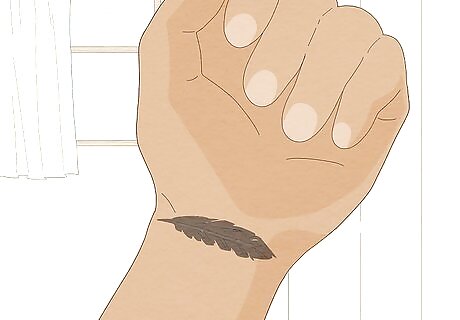
Get a tattoo to cover up the scars. Book a consultation with a reputable tattoo artist to discuss the possibility of tattooing over a scar (or scars) left behind from your self-harming period. Bring a design to the consultation, or have a clear idea of what you want to have as a tattoo before meeting with them. Be sure that you are ready for the commitment of having a tattoo, taking into consideration how you might feel about it in the future.
Ask your doctor about treatments to reduce scarring. There are a few different options for covering up or even fading self-harm scars. If you’re looking for a more permanent solution, but don’t want to commit to something like a decorative tattoo, discuss treatments such as: Medical tattoos, which hide the scar by tinting it to look more like the surrounding skin Needling, which involves using needles to gently break up and remodel the scar tissue Laser treatments to reduce the appearance of scars Surgery to cover, remove, or reduce scars














Comments
0 comment